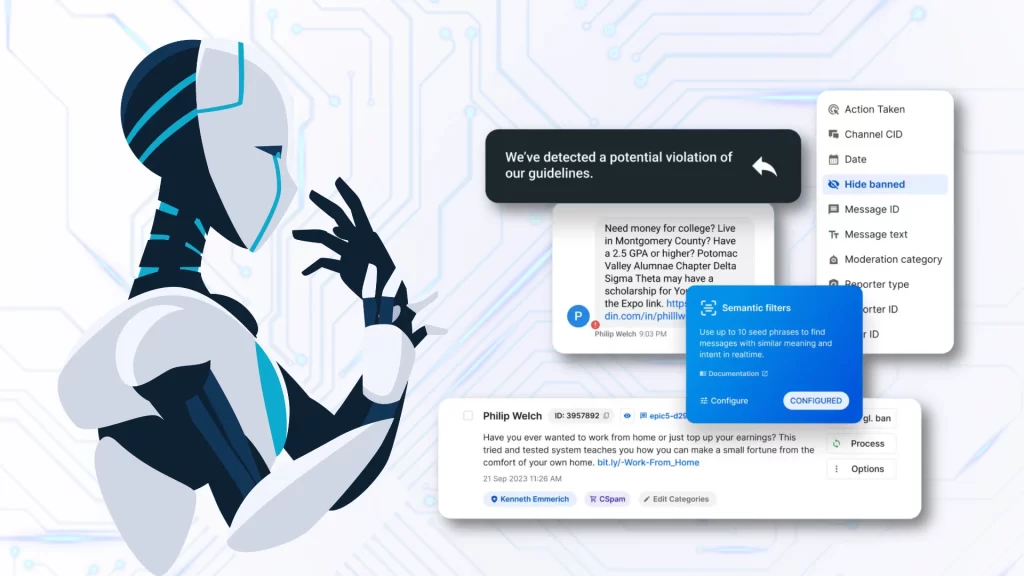AI to Human Text That Captivates, Engages, and Drives Conversions Instantly
Today, tools like ChatGPT make it quick and easy to create content. But AI-written content can sometimes feel stiff or unnatural. That’s where an AI to human text converter comes in—it changes AI-generated writing into something that feels personal, friendly, and real.
Let’s learn how these tools work, why they’re helpful, and how you can use them to improve your content.

Why Humanizing AI Content Is Important
AI tools like ChatGPT are powerful for creating content quickly, but people still crave writing that feels human. Around 88% of consumers say authenticity is key when choosing which brands to support.
Robotic or overly formal content can feel disconnected, pushing readers away. For instance, a study by Semrush revealed that 91% of marketers saw better results with content that prioritized user experience and storytelling over plain automation.
Additionally, it’s estimated that 70% of website visitors won’t return if the content doesn’t meet their expectations for clarity or relevance.
This proves that even with AI, a human touch is critical. An AI-to-human text converter can refine drafts to make them not just readable but relatable. It’s not just about writing fast—it’s about creating connections that last.
How Do AI to Human Text Converters Work?
These tools do three important things to make your content better:
- Make Writing Smooth
Sometimes, AI writing can sound repetitive or awkward. Converters fix these problems, so the sentences flow naturally.
- Add Emotion
AI writing can feel cold. Humanizing tools make it warmer and more personal, so it’s easier for readers to connect.
- Help with SEO
Good tools combine human-like language with artificial intelligence SEO techniques to make sure your content ranks higher on Google.
Real Examples of Businesses Using AI
Many businesses use AI for content creation, but the best results come when humans and AI work together.
- LinkedIn’s Team Approach: LinkedIn uses AI to draft articles but improves them by adding ideas from real experts. This teamwork makes the content more useful and engaging.
- Bankrate’s Financial Articles: Bankrate uses AI to create drafts but always checks the facts with editors. This way, their financial advice is accurate and reliable.
- CNET’s Lessons: CNET tried using AI to create articles but got criticized for not being open about it. This shows how important it is to be honest about using AI.
Simple Tips to Make AI Content Feel Human
If you’re a marketer or small business owner, here’s how you can make AI content better:
1. Share Real Stories
The audience likes to read stories they can relate to. For example:
“Last year, a small bakery used AI tools to improve its website. They saw a big jump in sales, growing by 50%.”
2. Use Emotional Words
Words that make people feel something grab attention. Instead of saying, “AI can help you,” write, “Imagine AI tools helping your business grow faster than ever.”
3. Keep It Simple
Write as if you’re talking to a friend. Research shows that content written in easy language, like at a 5th-grade level, is easier to understand. Tools like online paraphrasing tools can help you simplify complex ideas.
4. Work with Experts
Let AI do the first draft, but add your expertise to make it more interesting and useful.
Does Humanized AI Content help SEO?
Marketers often wonder if making AI text more human improves SEO. The answer is yes, but it must be done right.
Google wants content that provides real value to readers. Businesses like Bankrate and LinkedIn show that human oversight is key to making AI-created content rank well. By blending human edits with SEO AI strategies, you can create content that performs better and feels natural to readers.
Tools like BypassGPT can also rewrite AI text to pass AI text detectors while improving its readability. This ensures your content is both search-friendly and appealing.
Facts About AI Detectors and How to Pass Them
AI detection tools are helpful but not perfect. Here’s what you should know:
- Accuracy Issues: Some AI detection tools, when tested on models like ChatGPT 3.5, have shown varying accuracy rates. For instance, Originality. AI claims a detection accuracy of up to 94% for GPT-3 generated content.
- False Positives: The U.S. Constitution was once flagged as AI-generated by a detection tool. This shows how easily human-written content can be mistaken for AI.
- ZeroGPT’s Features: ZeroGPT is considered one of the best AI detection tools because it highlights flagged portions of text, making it easier to fix issues.
- Improving Scores: In one test, rewriting flagged sections reduced the AI score from 18% to just 4%. Using tools like these can help your content pass detection checks.
Passing Turnitin: Rewritten AI content can achieve a 0% similarity index on Turnitin, ensuring no plagiarism and no AI detection.
Be Honest When Using AI
AI tools like ChatGPT or AI writer free are helpful, but being transparent is important. Readers trust you more when they know how you’re using AI:
- Always check facts in AI-written content, especially for sensitive topics like finance or health.
- Let your readers know when AI was part of the process.
- Use human editors to make sure the final content is accurate and useful.
Final Thoughts: AI and Humans Work Better Together
AI tools can save you time and help you write better, but they need a human touch to make the content truly shine. An AI to human text converter lets you combine the speed of AI with the creativity of people.
By adding stories, emotional words, and human edits, you can create content that ranks well on Google and feels personal to your readers. Whether you’re writing blogs, improving website content, or crafting social media posts, tools like BypassGPT and good editing practices can make all the difference.
So, remember: The best content comes when AI and humans work as a team.
Think AI content is copyright-free? The truth might surprise you! Stay tuned for our upcoming blog to uncover the reality.











I don’t think the title of your article matches the content lol. Just kidding, mainly because I had some doubts after reading the article.
Your point of view caught my eye and was very interesting. Thanks. I have a question for you.
Can you be more specific about the content of your article? After reading it, I still have some doubts. Hope you can help me.
Your point of view caught my eye and was very interesting. Thanks. I have a question for you.
Thank You. We really appreciate it. Kindly let us know your question.